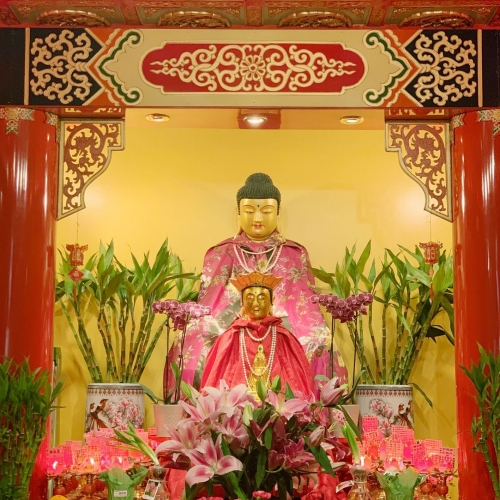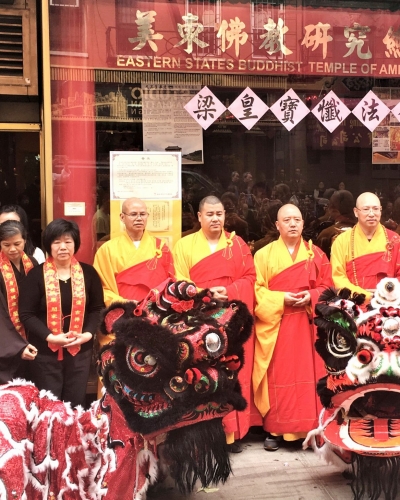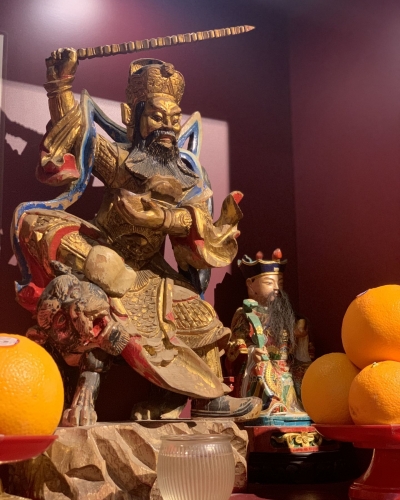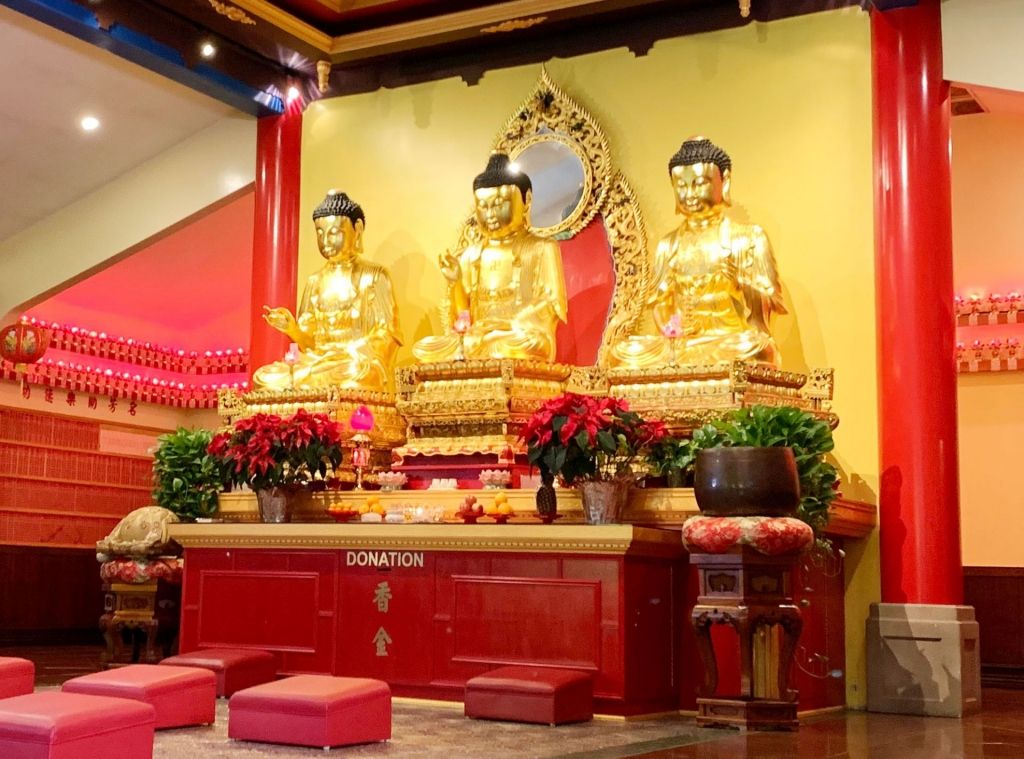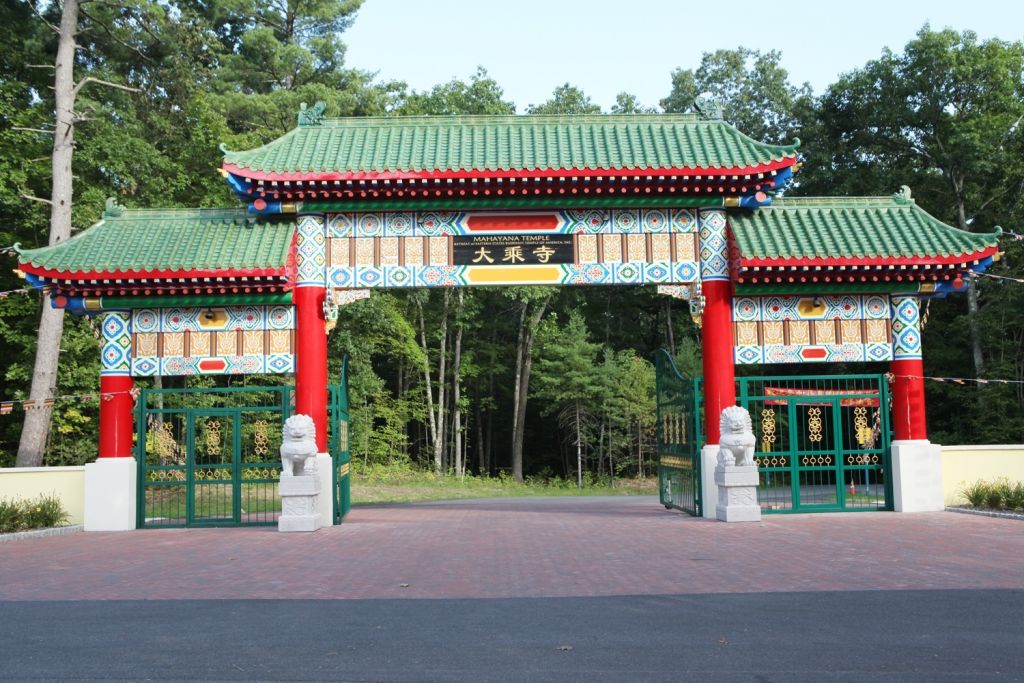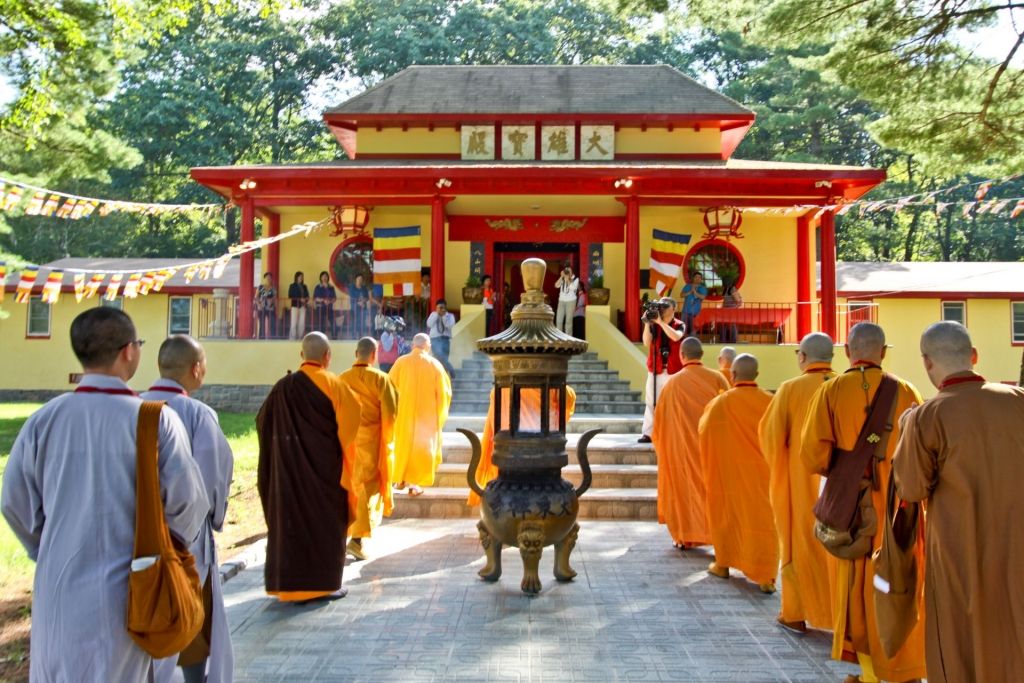History of Our Temple
Eastern States Buddhist Temple of America (ESBT)
The Eastern States Buddhist Temple of America, Inc., found in 1962, is the oldest Chinese Buddhist temple on the eastern coast of the United States. It was found by Mrs. Annie Ying, and funded by her husband Mr. James Ying. Both served as the Founding Co-Chairmen.
Eastern States Buddhist Temple, or The Temple, was initially founded to fulfill the needs of Chinese Buddhists in the greater New York area and held its first services in a 20 by 20 space at 1544 Broadway in the rear part of Mr. Ying’s store at 1544 Broadway. Lunch and other activities were held in the basement. In 1962, Eastern States Buddhist Temple was officially registered and then rented its own space at 64 Mott St.. 50 years later, The Temple is still located there and had become a landmark and a community fixture.
The choice of 64 Mott Street was dictated not only by the fact that this is a convenient place for Chinese Buddhists to gather each week, but also because Mrs. Ying saw a particular need in Chinatown.
What she saw was many elderly Chinese men sitting on the sidewalk all day and drinking coffee. Upon inquiry, she discovered that these elderly men were laborers from China who planned to leave their family for perhaps one or two decade, earn some American dollars, and then return to their home and family. What they did not count on was the communist revolution. That war essentially scattered their family all over China and thus terminated all their communications with their family members. Now that these men are old and retired, they have neither a Chinese home to return to, nor have they gotten sufficiently Americanized to consider United States their new home. So they sit all day on the sidewalk and drink coffee and chat and wait. What they need is a place to gather and read and chat.
So the new home of the Eastern States Buddhist Temple was designed by Mrs. Ying to be both a social club for these men as well as a temple. As one enters the premises, before actually going into the temple proper, one is in an 8’ by 18’ vestibule with a rectangular table in the middle off to one side and book cases forming one of the walls. These elderly men then came and sat and played chess or read newspaper. Free hot tea was also supplied by the Temple. This ‘social club’ became a smashing success from day one. However, we discovered, that they did become sort of ‘acclimated’ after all…. they often preferred drinking coffee instead of the free tea.
As one walks a few steps through the vestibule and then under a red wooden archway, one enters the temple proper which has many rows of seats on both sides. At the far end, sits a statue of Kuan Yin, the Goddess of Mercy and Compassion. And again from day one, the Temple too was a smashing success. As the first (and only) Chinese Buddhist temple on the eastern coast of the United States, this is where all the Chinese Buddhist functions in Greater New York are held. And in addition to serving the Chinese parishioners, there were lectures every Saturday night for the general public.
Retreat Mahayana Temple
Years went by and The Temple had many Visiting Abbots. Some lectured for six to twelve months and returned to China. Others choose to remain in the United States and establish their own temples. By 1969 there are more than enough Buddhist temples to serve all the Chinese population in Greater New York. However, even the best were just storefront temples. A temple and abbey such as the ones in China is needed for the Buddhists who want to go on retreat.
So Mrs. Annie Ying again stepped up to the plate. She and her family spent many evenings looking at maps and land catalogs. After narrowing down the various choices, Mrs. Ying went with real estate brokers and personally visited the potential sites. Finally a 114 acres site in South Cairo was chosen.
After the land was purchased, Mrs. Ying then roamed the land looking was a suitable temple site. Meanwhile she also worked with her architect in translating her temple vision into structurally legal designs that are approvable by the building department. Then finally she interviewed building contractors and then personally supervised the construction.
The Mahayana Temple Main Hall in south Cairo was finally completed and the dedication ceremony took place on Sept. 25th, 1971. Since then, over the years, the Kuan Yin Hall, followed by the Dee Tsang Hall, the Earth Spirit Hall, the Seven Storied Jade Pagoda, and finally the 500 Arhat Hall were built and dedicated. Some neighboring lands were also purchased when they came on the market. The Mahayana campus now has about 166.5 acres.
City Campus Mahayana Temple
Having spent several decades in building and completing the first Chinese Buddhist retreat in New York, Mrs. Ying then stopped and looked around to see what else is needed in Greater New York. She discovered that the Buddhist temples in the city area, even after these many years, still essentially all are storefront temples. They are too small for any sizable functions for the parishioners. So, Mrs. Annie Ying then built Mahayana (City) Temple in the center of New York’s Chinatown. It was dedicated on lunar date March 3rd in 1997 in honor of Mr. James Ying’s 83rd birthday,.
The Eastern States Buddhist Temple and the two Mahayana Temples now stands ready to serve all those who seek a better life on earth as well as a better after-life.




